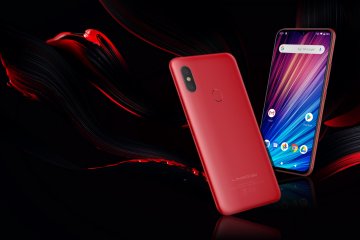I’ve used three Kaby Lake systems so far, two of which I’ve built. Not too sure about the platform. I’ll split this into two parts, about a mobile “U” series CPU and two desktop series CPUs.
1. Mobile Kaby Lake CPUs
This is where I feel Intel are lightyears ahead of AMD and spot on the mark. I’ve a Dell Inspiron 1560 (a cheaper XPS 15, basically) powered by Intel Core i7 7500U (2.7GHz / 3.5GHz turbo) 16GB DDR4 2400MHz RAM, 256GB mSATA + 1TB 2.5″ SSDs. This machine was a replacement for my older Gigabyte P34w v3, a Core i7 “Haswell” quad core at 2.6GHz / 3.6GHz turbo, 16GB DDR3 1866MHz RAM and 1TB 2.5″ SSD.
1.1 Haswell quad core vs. Kaby Lake dual core?
Elephant in the room. I downgraded from a quad to dual core CPU. Yes, I lost quite a lot of CPU power… But I’m totally okay with it!
Core i7 4720HQ gets a CPU Benchmark score of 8030
that’s a single core score of 1915
Core i7 7500U gets a CPU Benchmark score of 5246
that’s a single core score of 1942
Straight away we can see I’ve lost 1/3rd of performance from my laptop “upgrade” but on the other hand; I’ve onlylost 1/3rd of performance by halving my core count. Plus, my single core speed is a smidgen higher now!
1.2 Real-world non-gaming performance
Directly comparing my Haswell i7-4720HQ to the Kaby Lake i7-7500U, my day-to-day performance is faster. I have less cores, but with refined instruction sets and shrunken dies (22nm vs 14nm) those cores are now much faster. I have the same amount (16GB) of RAM, but again DDR3 1866 vs DDR4 2400 it’s much faster. Interestingly, RAM latency is a little higher but it doesn’t seem to make a difference. Web browsing in Chrome is massively improved when compared side-by-side and I feel that has a lot to do with the single-core/single-thread performance of actually processing the page content. The Kaby Lake on-chip graphics is much faster than the Haswell, which probably helps here too.
Both Gigabyte and Dell laptops have discrete video cards in them. The Gigabyte has a still-to-this-day mammoth GTX 970M with 3GB GDDR5 and I’m sure it sings like a choirboy during games, but let me tell you, Nvidia Optimus forcing Chrome onto this GPU fucking sucks. Chrome just crawls. GPU-Z shows much higher GPU load than comparable with the Intel on-chip. Same with the Dell, which has a GeForce 940MX. So always, always use Intel graphics for web browsing.
1.3 Graphics performance
The Intel HD 620 graphics on the Kaby Lake effortlessly plays back every type of video content I’ve tried, all the way up to 4K HD H.265 videos. Video playback is cool and quiet – the fan doesn’t spin up at all. Trying the same 4K HD video on the Haswell quad core quickly leads to noisy fan syndrome although the video plays smoothly. FWIW, I always use PotPlayer.
Video encoding is great with Kaby Lake, too; Handbrake can use QuickSync to quicken H.265 encoding and it really does fly. Fastest encoding of H.265 I’ve ever seen so far. It beats my Ryzen 7 1800X by about 4x speed!
1.4 Power consumption & thermals
This is the interesting part! I have to say, I’m astonished at how far Intel have come with Kaby Lake mobile CPUs. The 7500u is a 15w TDP chip, and Dell have a reasonably meaty heatsink on this thing. Crazy part? The fan hardly ever spins up! Typical usage; Chrome, Spotify/Winamp, Mail client, Skype, Slack, IRC, Notepad++, Word (or some productivity). I have CoreTemp running in the tray to monitor temps and frequencies. I turbo to the full 3.5GHz a lot, and my temperatures sit typically 45-55C. Fan kicks in if >70C for 3 seconds, or >60C for 10 seconds. This rarely ever happens – probably less than 5% of the time.
Right now, with all of the above applications (plus a few more) open, writing this blog, listening to music, my power consumption for the whole CPU package (that’s CPU cores, GPU, Uncore (Northbridge) and RAM) is hovering 2.1w-3.4w of power. I’m really sorry but how the fuck?! Intel, I bloody love you! I don’t know how this is possible but I can’t smile enough at how cool and quiet Kaby Lake laptops are!
When you’re flogging the CPU, i.e. batch encoding music, the power consumption sits “flat” at 15w and I almost always see full turbo of 3.5GHz on both cores. Prime95 sees the same 15w flat power consumption, but clock speeds vary between 2.9GHz-3.1GHz. Thermals are awesome; the fan runs of course, but it’s quiet, and the CPU stays under 75C at all times. The fan isn’t noticeable and the laptop as a whole is cool to the touch, even directly under/over the CPU area. Using it on a lap vs desk doesn’t make any difference, it’s still cool and quiet.
2. Desktop Kaby Lake CPUs
Separate section here because ultra-mobile vs desktop CPUs are obviously very different animals. The ultra-mobile CPUs are built with every possible power saving method in mind, rather than squeezing the maximal performance out of a chip.
2.1 Kaby Lake desktop in 1u rackmount servers?
Yes, it’s true. I’ve built two 1u Kaby Lake “servers” now, simply because the comparable Xeon performance isn’t anywhere near the same price range, plus right now, Kaby Lake Xeon chips cannot be bought for love nor money.
Xeon E3-1270 v5 @ 3.6GHz / 4.0GHz turbo
Built on Skylake, 80w TDP, 8MB cache, 64GB DDR4 max. Non-ECC
CPU Passmark multi core 10186, single core 2138
Total price inc. CPU, board, RAM, SSDs, chassis, PSU = £1982
Intel Core i7 7700 @ 3.6GHz / 4.2GHz turbo
Built on Kaby Lake, 65w TDP, 8MB faster cache, 64GB DDR4 max. Non-ECC
CPU Passmark multi core 10787, single core 2327
Total price inc. CPU, board, RAM, SSDs, chassis, PSU = £1622
It’s £360 cheaper to build a system with newer, faster and lower power components. It’s not “server” grade, but neither is the Xeon E3 series if we’re honest, since it does not accept ECC RDIMM modules. Do not be fooled by ECC UDIMM; they are Unbuffered, not Registered, so you don’t get the true benefits of ECC.
2.2 Kaby Lake thermal performance
Although power consumption is a concern when we’re talking racks on racks of servers, the home user doesn’t care much about this. Nonetheless, I can confirm, the actual power draw between Xeon E3 v5 (Skylake) and i7 Kaby Lake chips are as-good-as identical. I tested idle consumption vs load and they vary by <5 watts. Thermal output and handling is a total different story however.
Choose your Kaby Lake motherboard wisely! Testing two 1u rackmount builds with the same chassis, same power supply, same RAM, same heatsink had a massive difference of temperatures between different motherboards.
Asus PRIME B250M-PLUS with Core i7 7700
33C idle, 94C full load with Prime 95
ASRock Fatal1ty Z270 Gaming K6 with Core i7 7700
29C idle, 81C full load with Prime 95
That’s right. It’s crazy! Both running latest BIOSes and I even swapped the CPUs between the machines, but it made no difference. Why? Because the Z270 board has masses of power filtering around the CPU and the B250M-PLUS has very little. The power is properly regulated and very clean on the ASRock board compared to the ASUS one. Make sure you spend a little extra on a decent board, especially if you’re thinking about overclocking!
2.3 Kaby Lake i7 vs. Xeon E3 v5 performance
I did quite a lot of testing here to gather real world performance of a server environment between the desktop i7 versus “server” E3 chips.
MySQL performance
I imported the same large 8.9GB MySQL database onto a VM on both servers. The VM image was the same and the test was repeated twice and averaged.
Intel Xeon E3-1270 v5 – MySQL import took 434 seconds
Intel Core i7 7700 – MySQL import took 392 seconds
PHP performance
Using the same VM image, I ran a test generating 50,000 PHP queries to be handled by the CMS. Same image, same configuration, just different hardware.
Intel Xeon E3-1270 v5 – 188 PHP requests per second
Intel Core i7 7700 – 201 PHP requests per second
For the detail dudes out there; same RAM modules & speed, same SSDs, same RAID config, CentOS host nodes, both same OS version, same kernel. KVM virtualisation with stock settings. KVM CPU tuned to ‘passthrough’ and 8 cores to match host node. Identical VM image clone, same MySQL and PHP-FPM configuration on both servers. No other VMs running. The difference is purely from architecture.
3. Final thoughts on Kaby Lake?
It’s good! Buy one! Intel are progressing nicely, much better than AMD (sorry fanboys, but it’s fucking true!).
Mobile chips, especially the ultra mobile series, are just mindblowing. I can’t understand how they’re so quick and snappy yet run so cool! Even though I had a “downgrade” from quad to dual core, there’s nothing I can’t do on the dual core that I could on the quad, and daily tasks are faster when I take the two machines side by side.
Desktop, meh, same thermal performance compared to Skylake although my benchmarks show they are faster at the same power/thermal usage. So I guess we’re making progress there, too. It’d be nice to see the same kind of breathtaking low power consumption when idle on the desktop chips, but I do understand that’s not what they’re made for. Still, Intel, help us save the earth ey! 🙂



1 Comment
RD · 2018/05/29 at 00:33
AMD Ryzen is a better choice. Cheaper, faster, less heat.